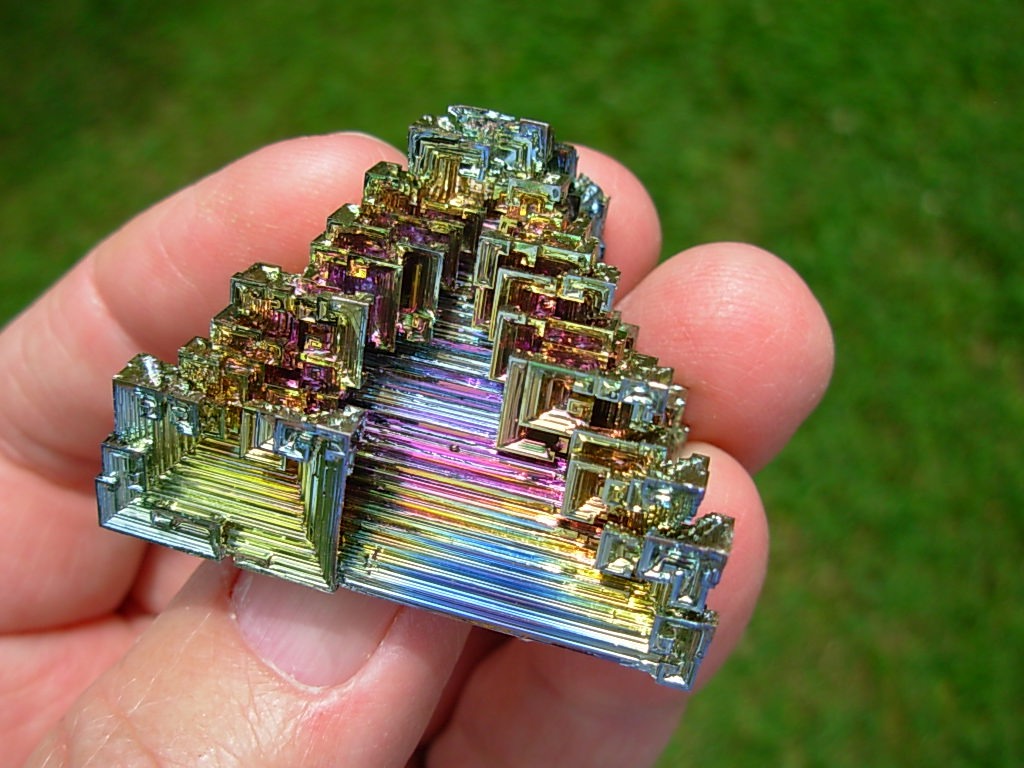Bismuth Crystals
Bismuth is a natural mineral but Mother Nature doesn't make Bismuth Crystals! Bismuth is rarely found in nature in its elemental form. Of growing interest in rock shops, however, are laboratory-grown bismuth crystals. These crystals, while not natural, are nonetheless very interesting and sought after by the mineral hobbyist, collectors and rock hounds. The unique look that these crystals offer is really something very special!
The making of Bismuth Crystals has historically been an art. Rock and Mineral collectors (rockhounds) worked for years developing their crystal growing techniques in their garages and basements. Years ago there was a gentleman in Canada who grew some of the most fantastic Bismuth Crystals we had ever seen in the 30 to 590g range. We were able to get many of these for our customers until he retired. We then found a source here in the USA for some nice specimens, they were in the 30 to 120g range until they stopped making them.
We bought a flat of bismuth crystals from a wholesale dealer at the Franklin rock show about 4 or 5 years ago. These however (we found out later after we complained) were made in China. We sold a few in small groups but threw most of them away because the quality was terrible. We researched and questioned why our suppliers stopped making these crystals. We learned that China now owns the majority of the world's bismuth minerals, another step in their ongoing conquest to control the world's rock, mineral and gem market.
They are mass producing bismuth crystals in factories and have found ways to make colors stronger to attract younger buyers. The quality…leaves MUCH to be desired.. These photos show an easy way to determine if the bismuth you are looking at is from China….sadly, there are American sellers pushing this Chinese bismuth. Notice the colors are very strong as opposed to the more natural subdued colors made here in America. Many minerals have now come under China's control. China has a long history of counterfeiting minerals such as dying white howlite blue literally in tidy bowl, sealing it and selling it as turquoise. SpiritRock Shop will not knowingly buy or sell any knockoff rock, mineral or gem from China, and certainly none of their bismuth!
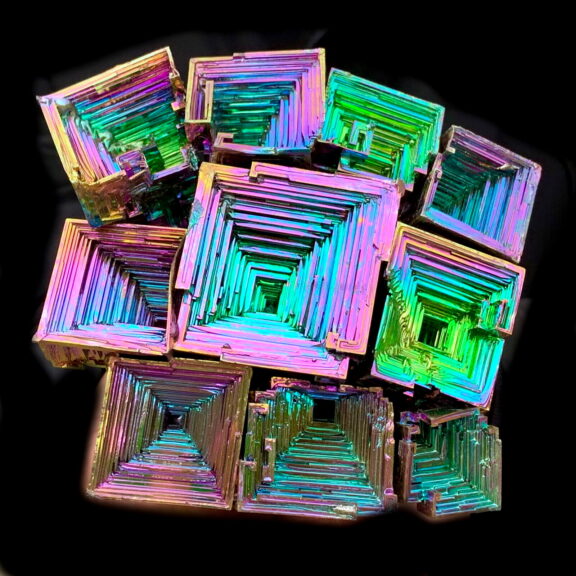
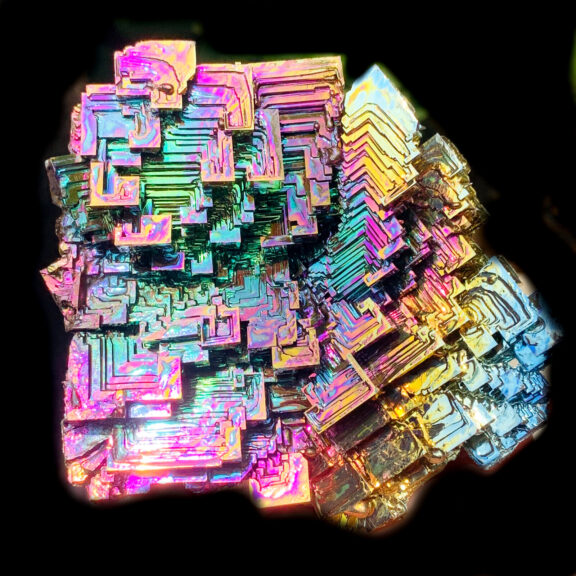
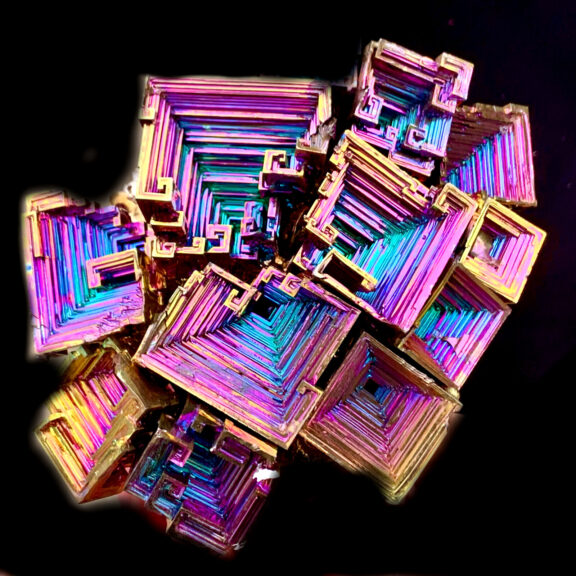
Bismuth was discovered in 1753 by Claude Francois Geoffroy. It is a very unusual and rare heavy metal that is solid at room temperature. It is more rare than platinum, ranking number 69 out of the 75 listed rare elements found on Earth’s crust. One very interesting thing about bismuth is that its liquid form is denser than its solid form. So as bismuth crystallizes, its solid form floats above the liquid. This effect is only found in 3 other cases (water, gallium, and germanium).
Bismuth is a white, crystalline, brittle metal with a pinkish tinge. It occurs in a native state. Bismuth is the most diamagnetic (repels magnets) of all metals. Its thermal conductivity is lower than any metal, except mercury. Bismuth has a high electrical resistance normally and has the highest Hall Effect (increase in electrical resistance when placed in a magnetic field) of any metal. High-purity bismuth can form into distinctive and beautiful hopper crystals.
Bismuth crystals are man-made or laboratory “grown”. They are normally made from commercial 99.99% pure bismuth. Bismuth melts at 271.3 degrees Centigrade / 520.34 degrees Fahrenheit / 544.45 degrees Kelvin. Bismuth crystal growth time is between 4 to 10 minutes as they form in a cooling bismuth melt. In its solid form, bismuth is incredibly fragile. However, the crystals form to show perfect cleavage, making it tempting to handle and touch. The reason the crystal structure is so fragile is because the rapid growth causes hollow stepped forms, called “hopper crystals”.
The naturally subdued iridescent coloring ranging through reds, blues, purples, gold and greens is due to a thin layer of bismuth oxide that forms on the surface of the crystal as it cools. This is actually interference coloring, similar to the coloring you see on soap bubbles and on oil slicks, and is based on how thick the oxide grows. The brightness and color intensity can vary from sample to sample, depending on the quality and purity of the bismuth used.
The Specimens Listed Below were all "Made in the U.S.A."
Click photos for more information about items
-
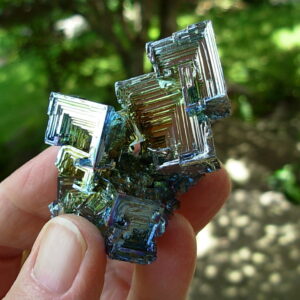
103g Bismuth Crystal (Made in Michigan) 9
$32.00 Read more -
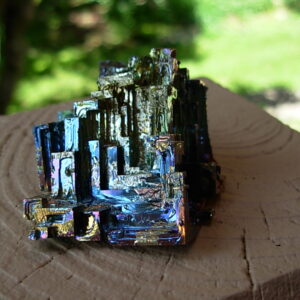
106g Bismuth Crystal (Made in Michigan) 10
$24.00 Read more -
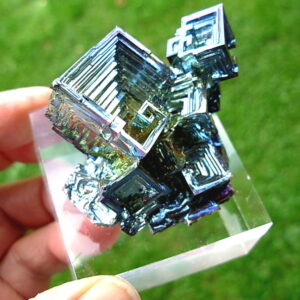
110g Bismuth Crystal (Made in Michigan) on Acrylic Base 7
$43.50 Read more -
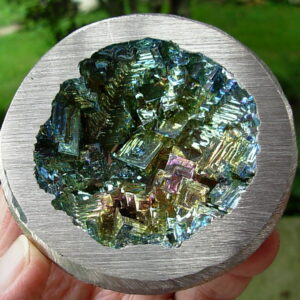
465g Bismuth Geode Made in America 1
$63.00 Read more -
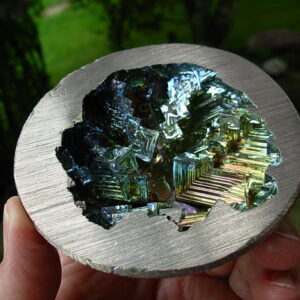
498g Bismuth Geode Made in America 2
$68.00 Add to cart -
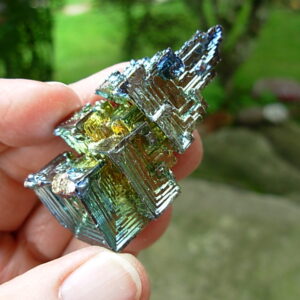
61g Bismuth Crystal (Made in Michigan) 6
$22.50 Read more -
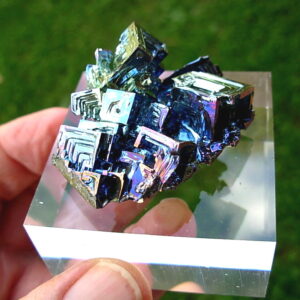
66g Bismuth Crystal (Made in Michigan) on Acrylic Base 4
$39.00 Read more -
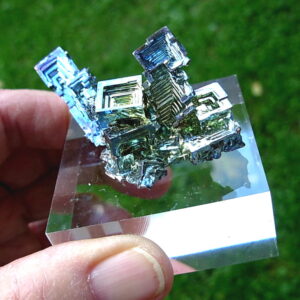
70g Bismuth Crystal (Made in Michigan) on Acrylic Base 3
$39.25 Add to cart -
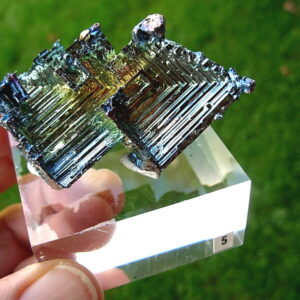
73g Bismuth Crystal (Made in Michigan) on Acrylic Base 5
$39.75 Add to cart -
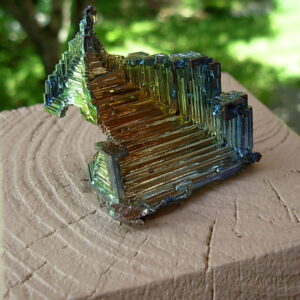
76g Bismuth Crystal (Made in Michigan) 8
$24.00 Read more

